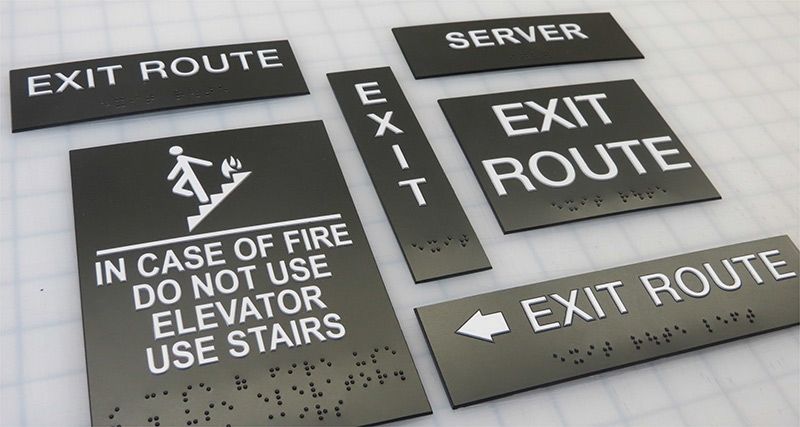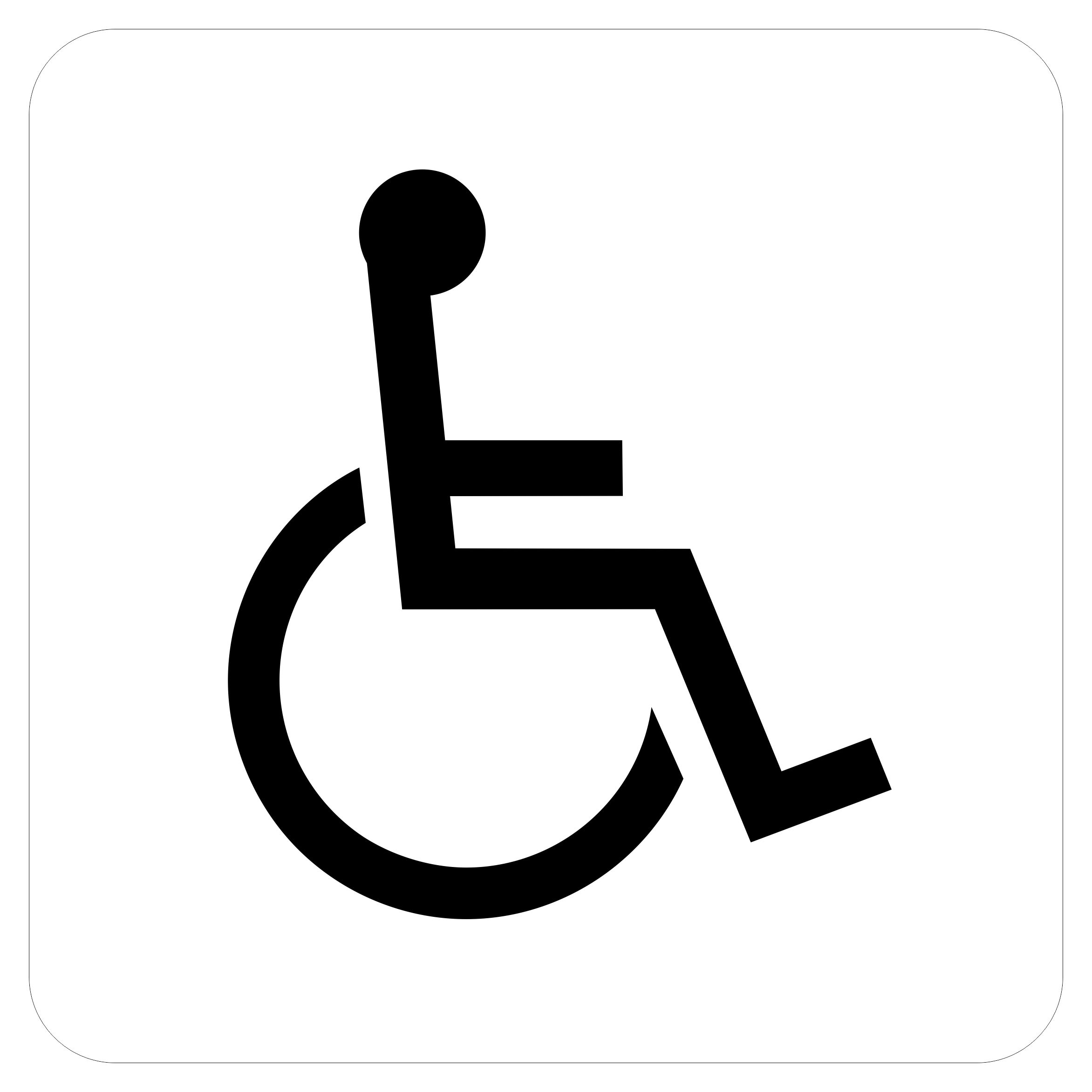The Duty of ADA Signs in Complying with Ease Of Access Criteria
The Duty of ADA Signs in Complying with Ease Of Access Criteria
Blog Article
Checking Out the Trick Attributes of ADA Indications for Improved Availability
In the realm of accessibility, ADA signs offer as quiet yet powerful allies, making sure that rooms are accessible and comprehensive for individuals with handicaps. By integrating Braille and responsive aspects, these indications break barriers for the visually damaged, while high-contrast shade plans and legible typefaces accommodate diverse aesthetic requirements. Their tactical positioning is not approximate however instead a calculated initiative to facilitate seamless navigating. Beyond these attributes exists a much deeper story regarding the evolution of inclusivity and the recurring dedication to creating fair spaces. What a lot more could these indicators signify in our pursuit of global ease of access?
Relevance of ADA Conformity
Guaranteeing conformity with the Americans with Disabilities Act (ADA) is critical for cultivating inclusivity and equivalent gain access to in public spaces and work environments. The ADA, passed in 1990, mandates that all public facilities, employers, and transport solutions fit people with disabilities, ensuring they take pleasure in the exact same rights and opportunities as others. Compliance with ADA standards not only fulfills lawful obligations but likewise boosts a company's track record by demonstrating its commitment to diversity and inclusivity.
One of the essential aspects of ADA compliance is the implementation of obtainable signs. ADA signs are created to make certain that individuals with specials needs can conveniently navigate through rooms and structures.
In addition, adhering to ADA laws can reduce the risk of prospective penalties and legal consequences. Organizations that fail to abide by ADA guidelines might encounter lawsuits or fines, which can be both economically troublesome and destructive to their public photo. Therefore, ADA compliance is essential to fostering an equitable setting for everyone.
Braille and Tactile Elements
The incorporation of Braille and responsive components right into ADA signage personifies the principles of access and inclusivity. These functions are crucial for people who are visually impaired or blind, allowing them to browse public areas with better independence and confidence. Braille, a responsive writing system, is important in offering composed info in a format that can be conveniently viewed through touch. It is normally positioned below the equivalent text on signage to ensure that individuals can access the details without aesthetic help.
Responsive elements extend beyond Braille and include raised signs and personalities. These components are created to be noticeable by touch, permitting people to recognize area numbers, toilets, departures, and various other critical areas. The ADA sets details guidelines regarding the size, spacing, and positioning of these tactile aspects to enhance readability and ensure uniformity across various atmospheres.

High-Contrast Color Schemes
High-contrast color pattern play a crucial role in enhancing the visibility and readability of ADA signage for people with visual problems. These plans are important as they make best use of the go to my blog difference in light reflectance in between text and history, guaranteeing that indications are conveniently noticeable, even from a range. The Americans with Disabilities Act (ADA) mandates using specific color contrasts to accommodate those with limited vision, making it a critical element of compliance.
The effectiveness of high-contrast colors hinges on their ability to attract attention in numerous illumination problems, consisting of dimly lit environments and areas with glare. Typically, dark text on a light background or light message on a dark background is used to attain ideal contrast. For example, black text on a yellow or white background offers a plain aesthetic difference that helps in quick recognition and comprehension.

Legible Fonts and Text Size
When considering the layout of ADA signage, the selection of understandable font styles and appropriate message dimension can not be overemphasized. These elements are important for ensuring that indications come to people with visual impairments. The Americans with Disabilities Act (ADA) mandates that fonts need to be not italic and sans-serif, oblique, manuscript, highly ornamental, or of uncommon type. These demands help make certain that the message is easily understandable from visit their website a distance which the characters are distinct to diverse audiences.
According to ADA standards, the minimal text height need to be 5/8 inch, and it ought to increase proportionally with seeing distance. Uniformity in message size contributes to a cohesive aesthetic experience, helping people in navigating atmospheres effectively.
Additionally, spacing in between letters and lines is integral to legibility. Sufficient spacing avoids characters from appearing crowded, improving readability. By sticking to these criteria, developers can significantly improve availability, ensuring that signage offers its desired objective for all individuals, no matter their visual capacities.
Reliable Placement Strategies
Strategic placement of ADA signs is important for taking full advantage of ease of access and making certain compliance with legal standards. ADA guidelines specify that signs must be placed at an elevation between 48 to 60 inches from the ground to guarantee they are within the line of view for both standing and seated people.
Additionally, signs have to be put nearby to the lock side of doors to allow simple recognition prior to access. This placement assists individuals find rooms and areas without blockage. In cases where there is no door, indications need to be situated on the nearby adjacent wall. Consistency in indication positioning throughout a center improves predictability, reducing confusion and improving total customer experience.

Conclusion
ADA indications play an essential role in advertising accessibility by incorporating attributes that resolve the needs of individuals with handicaps. These components jointly promote a comprehensive atmosphere, emphasizing the value of ADA compliance in making certain equivalent accessibility for all.
In the realm of ease of access, ADA indications serve as quiet yet powerful allies, making certain that rooms are navigable and inclusive for people with disabilities. The ADA, enacted in 1990, mandates that all public facilities, companies, and transport services suit people with specials needs, ensuring they appreciate the very same rights and opportunities as others. ADA Signs. ADA signs are made to make certain that people with disabilities can easily navigate via spaces and structures. ADA guidelines specify that indicators ought to be placed at a height between 48 to 60 inches from the ground to guarantee they are within the line of view for both standing and seated people.ADA indications play a crucial duty in promoting availability by integrating functions that address the needs of people with disabilities
Report this page